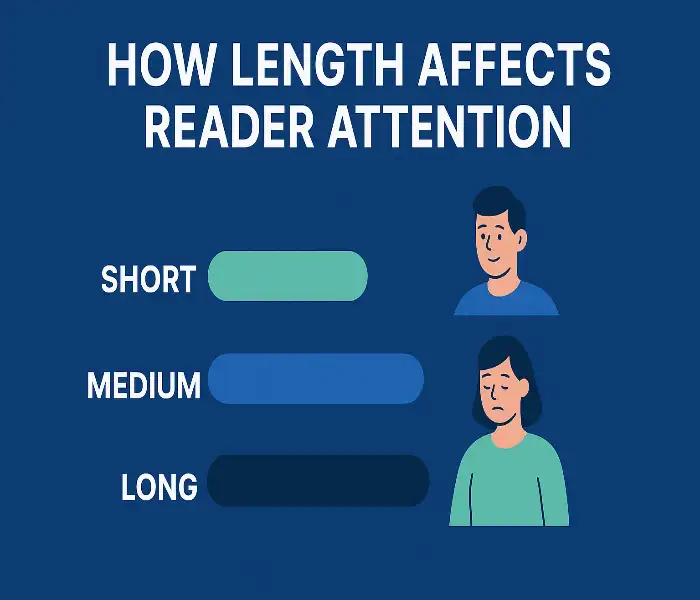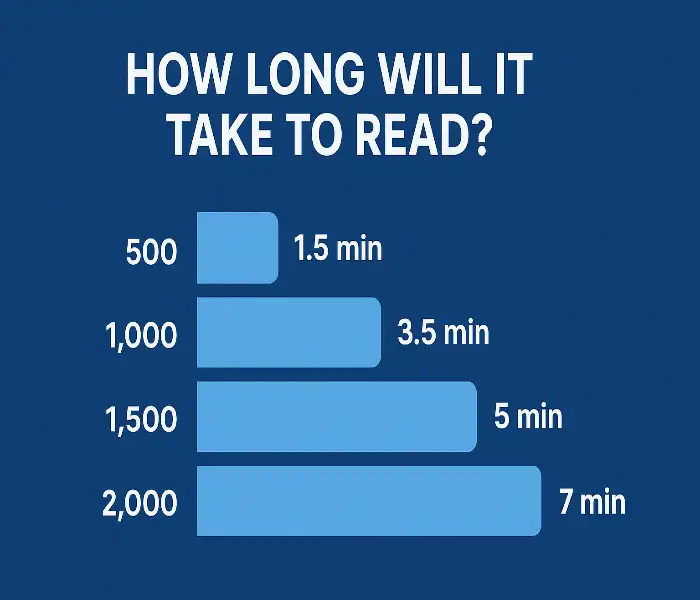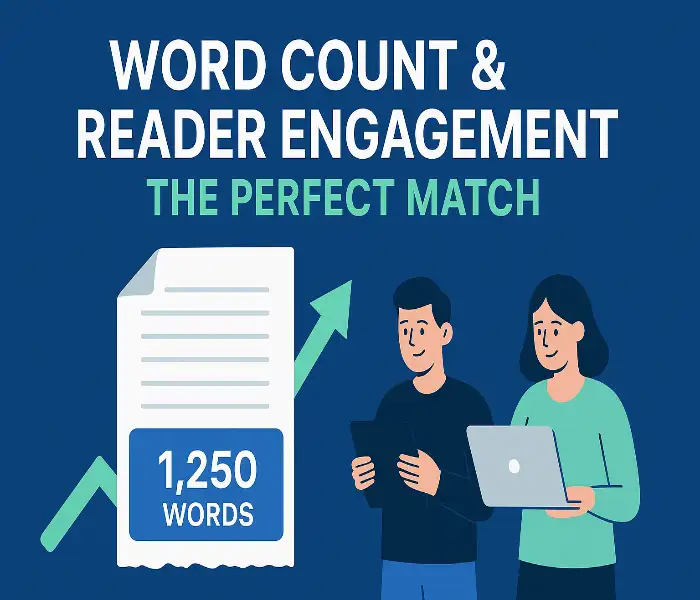Understanding Word Count’s Role in Reader Engagement
The Impact of Content Length on User Engagement
The number of words in a piece of writing can change how people feel about it. If it’s too short, they might feel it doesn’t have enough information. If it’s too long, they may lose interest. That balance helps boost reader engagement.
- Finding the sweet spot for your target audience: Different groups like different lengths. Younger readers may prefer short posts, while adults might enjoy deep stories.
- Balancing short stories, longer posts, and time commitment: People only have so much time. Short posts are quick to read, while longer ones need a bigger time promise.
- How word count affects bounce rate and reader interest: When posts are too long or too short, readers may leave quickly. But just-right content keeps them reading.
Writing Styles That Enhance the Reading Experience
Good writing styles make content more fun and easier to read. This helps people stay longer on a page.
- Using bullet points to improve readability: Bullet points break things down, helping the brain understand better.
- Character development in longer content: In long stories, adding feelings and detail helps people connect.
- Crafting content that meets reader expectations: Knowing what the reader wants keeps them interested. Always aim to give value.
Word Count and Search Engine Optimization
Optimizing Content for Search Engines
Search engines love content with the right number of words. That way, they can understand what it’s about.
- Search engine visibility and ideal word count ranges: Most top-ranked pages have 1000 to 2000 words. This helps with search engine visibility.
- Keyword density: Best practices for SEO strategies: Use keywords wisely. Not too many, not too few. Tools help find the best balance.
- How search engines rank content with longer word counts: Longer posts tend to rank better. But only if the content is useful.
SEO Strategies for Content Length
SEO isn’t just about keywords. It’s also about giving the reader something helpful.
- Analyzing engagement metrics with analytics tools: Use tools to see what readers like. This shows if your SEO strategies are working.
- Enhancing page count with meaningful content creation: More content pages mean more chances to rank.
- Improving search results through optimized word limits: Writing the right number of words can lift your page in search results.
How to Determine the Ideal Word Count for Your Content

Factors That Influence Word Count Goals
Different goals need different word count plans. The topic, audience, and platform all matter.
- Target audience, subject matter, and content types: Fun topics may need fewer words. Serious ones might need more.
- Time commitment and writing skills of content creators: Writers must balance quality and time. Short content can still be powerful.
- Balancing traditional publishing and online strategies: Online content often needs more keywords and clarity than print.
Word Count Goals for Various Content Types
Each type of content has its own best word count goals.
- Children’s books, picture books, and non-fiction works: Children’s books are short, fun, and colorful. Non-fiction needs more words and facts.
- Short stories, white papers, and blog post length: Short stories can be 500-1000 words. Blog post length often sits between 800-2000.
- Social media posts and email marketing campaigns: Keep it simple. Posts and emails should be short and clear.
Writing Tools and Techniques for Word Counting
Using Tools to Count Words and Optimize Content
Writers use many tools to keep their content length just right.
- Word count tools like Google Docs and Microsoft Word: These tools show the number of words and characters.
- Real-time word count feature and character count metrics: These help writers keep track as they go.
- AI tools to refine content length and keyword density: AI helps improve content with smart edits and SEO tips.
Best Practices for the Writing Process
Writers need rules and smart habits.
- Privacy rules for including data like phone number or email address: Never share personal info in content unless allowed.
- Leveraging Ernest Hemingway’s concise writing approach: Keep sentences short and strong, just like Hemingway did.
- Achieving balance between short-form and long-form content: Mix it up. Use both styles based on your readers.
Practical Tips to Maintain Reader Engagement
Content Marketing Strategies That Work
Content marketing is all about helping readers and keeping them interested.
- Creating key takeaways to boost reader engagement: People love quick tips they can remember.
- Using case studies to highlight successful content strategies: Real-life stories show what works best.
- Enhancing the reading experience through strategic content length: Right-size your content to keep readers happy.
Using Analytics to Refine Your Content Strategy

- Tracking engagement metrics with analytics tools: See how readers act on your pages. This helps you write better next time.
- Adjusting word count goals based on reader behavior: If readers leave fast, your content may be too long—or too short.
Key Insights on Word Count and Reader Engagement
- Tailor content length to your audience’s preferences: Every audience is different. Test what works.
- Utilize writing tools and SEO strategies for optimal results: Tools, SEO, and smart writing work together.
FAQ
How long will a 1000 word speech take to read?
It takes about 7 to 8 minutes to read a 1000-word speech out loud.
How do you estimate reading time based on word count?
Most people read around 200 to 250 words per minute. Divide your total word count by that.
How long does a 2000 word script take to read?
A 2000-word script usually takes 14 to 16 minutes to read aloud.
How long will 1200 words take to read?
Reading 1200 words will take about 9 to 10 minutes for most people.




